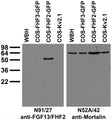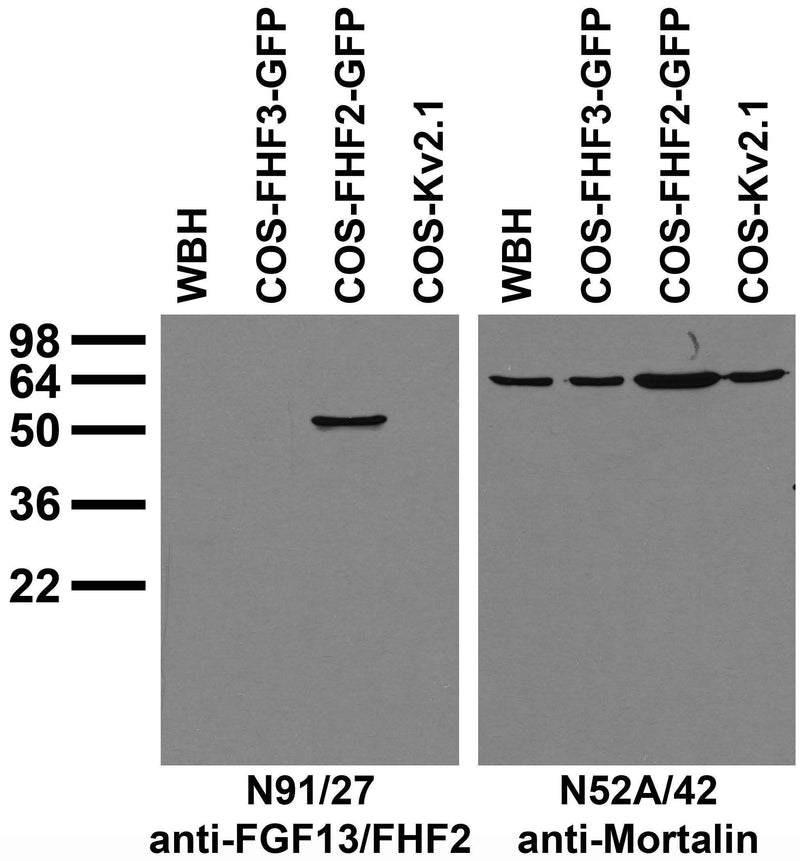Anti-FGF13/FHF2 Antibody (N91/27)
Our Anti-FGF13/FHF2 mouse monoclonal primary antibody from NeuroMab is produced in-house from hybridoma clone N91/27. It detects human and mouse FGF13/FHF2, and is purified by Protein A chromatography. It is great for use in ICC, IP, WB.
Human, Mouse
ELISA, ICC, IP, WB
Mouse
SKU: 75-134
Ships: 1-2 business days
Product Details
FGF13/FHF2
Fibroblast growth factor 13, FHF2 or FGF13 is encoded by the gene FGF13. FHF2 is a member of the fibroblast growth factor homologous factors family (a subfamily of fibroblast growth factors.). FHFs have a role in regulation of voltage fated sodium channels (Nav channels) and are thought to be involved in nervous system development. FGF13 is expressed in the nervous system and other tissues. Diseases associated with FGF13 include X-Linked Congenital Generalized Hypertrichosis and Wildervanck Syndrome.
Purified by Protein A chromatography
1 mg/mL
Monoclonal
N91/27
IgG1
ELISA, ICC, IP, WB
Mouse
FGF13 FHF2
28 kDa
Fusion protein amino acids 53-245 of human FGF13a (accession number Q92913) produced recombinantly in E. Coli
Human
Human, Mouse
AB_2104047
Aliquot and store at ≤ -20°C for long term storage. For short term storage, store at 2-8°C. For maximum recovery of product, centrifuge the vial prior to removing the cap.
Liquid
Produced by in vitro bioreactor culture of hybridoma line followed by Protein A affinity chromatography. Purified mAbs are >90% specific antibody.
10 mM Tris, 50 mM Sodium Chloride, 0.065% Sodium Azide pH 7.60
WB: 1:500
Unconjugated
Cross-reacts with FGF13a and FGF13bDoes not cross-react with FGF11, FGF12 or FGF14 expressed in heterologous cells
Each new lot of antibody is quality control tested on cells overexpressing target protein and confirmed to give the expected staining pattern.
These antibodies are to be used as research laboratory reagents and are not for use as diagnostic or therapeutic reagents in humans.
United States
24 months from date of receipt
Fibroblast growth factor 13 (FGF-13) (Fibroblast growth factor homologous factor 2) (FHF-2)
Shipped on ice packs
Product Specific References for Applications and Species
- Western Blot: Mouse
| Western Blot: Mouse | ||
| PMID | Dilution | Publication |
| 37516919 | 1:300 | Lesage, A, et al. 2023. Determinants of iFGF13-mediated Regulation of Myocardial Voltage-gated Sodium (NaV) Channels in Mouse. The Journal of general physiology, 0. |



